Hi,
Great news! We've added support for Azure AD groups in forms created through our brand-new Form Designer! This is the first time in the app version that we are offering support not only for rules based on individual users and SharePoint groups, but also AD groups, both directly and nested within other AD and SharePoint groups. It gives you the ability to leverage your existing AD groups, simplifying your user management tasks.
Form Designer offer multiple dynamic rule types that can be assigned directly to column and even other controls, such as containers, tabs, fragments, etc.
- Permissions - you can set a column (or a groups of columns in a container) to be in read/write or read-only mode or to be completely hidden.
- Validations - you can configure custom validation rules, testing column values based on patterns, comparing to specific values or other column values or checking the value length.
- Rules - you can set field values based on parameters, other field values, calculations and function results.
- Styles - you can dynamically set CSS styles to any columns or controls.
All of these rules can be conditionally applied, based on the current user's identity and/or conditions. You can check if the current user in a specific group (that's where the new feature comes in, you can now use AD groups, not just SharePoint groups and specific users), you can also check if the user is specified in a Person or Group column (directly or through a group) or indirectly, through a lookup item in another list. All of these features help you create fantastic looking, smart, dynamic forms without a single line of code.
The new feature requires you to download and install Ultimate Forms Extensions version 1.1.3.0 and up (upgrade if you have an older version). To install or upgrade:
- Download .sppkg file here
- Upload file to Enterprise Catalog. There is no need to remove your old version, the new version will overwrite the old one.
- On each site, where plan to use it:
- If it's not yet installed, install it through Add an app option of the gear menu
- If already installed, go to Site Contents, click on Details of the apps (in the context menu), then click on Get It for the new version.
The new version requests the permission to use Microsoft Graph API to read your directory information (that's how it knows what groups the current user is a member of). When you upload the .sppkg file to the catalog, it displays a trust request:
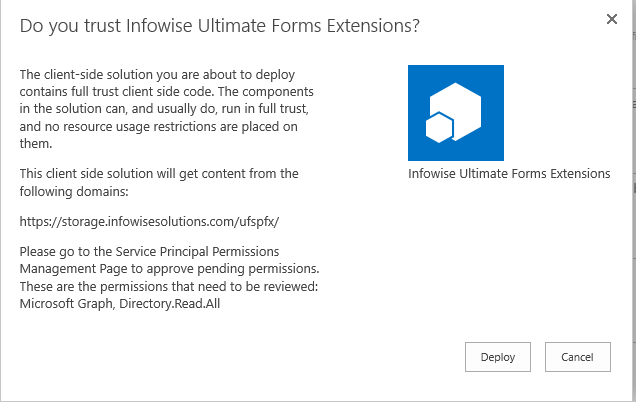
Pay attention to the last sentence in the request. Note that the app cannot request the permission to use Microsoft Graph directly, it can only request it, but an administrator has to approve this pending request.
- Click on the waffle menu in the top left corner, then click on the Admin app
- Under Admin centers in the left menu, click on SharePoint
- If you are still using the classic admin center, switch to the Modern preview. There is no option to approve the request in the classic UI.
- On the left menu click on API management under Advanced
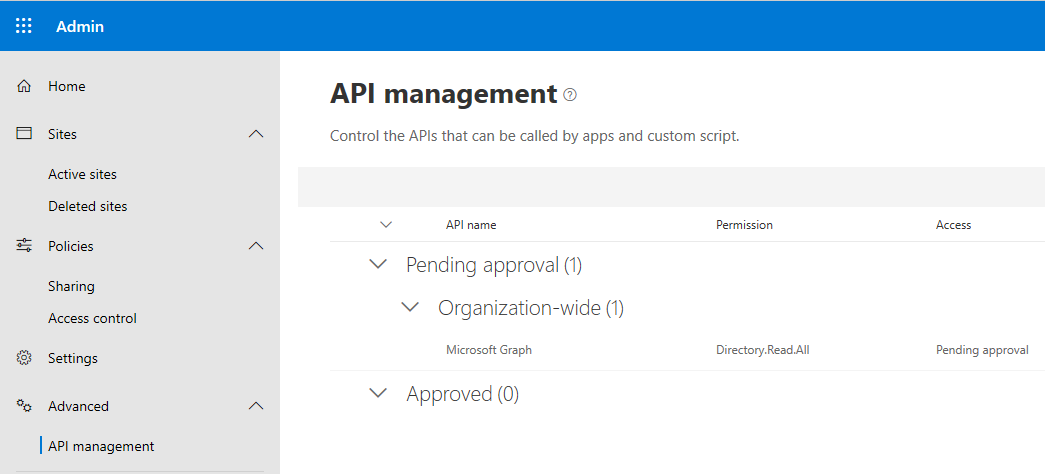
Here you should be able to see the pending approval request for Microsoft Graph. Approve it, giving the app the ability to read your directory data.
That's it, now you are able to use Azure AD groups in your rules:
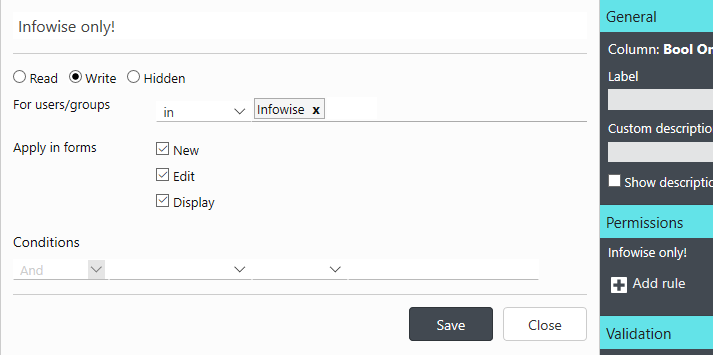
Here I added a permission rule for a column, allowing editing only for users in AD group Infowise.
NOTE: this functionality is not available in classic forms. This functionality will be added to on-prem version in the next release.
Add your comment
Flexible Forms
Convenient responsive modern forms, featuring tabs, section and column permissions, dynamic rules, repeating sections, electronic signatures and input validation, while keeping all your data safely inside SharePoint.
Smart dynamic SharePoint forms provide an exceptional user experience, improve data quality and simplify business processes, saving you valuable resources.
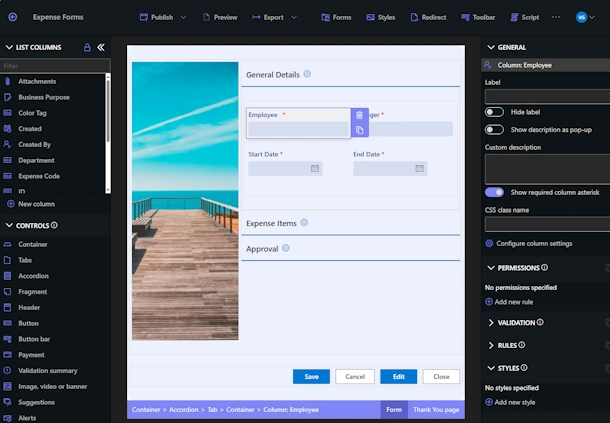
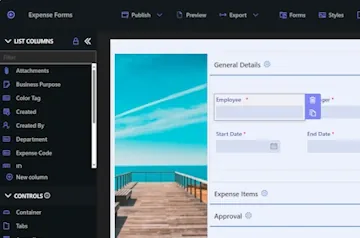
Intuitive Automation
Replace complex SharePoint and Power Automate workflows with simple, but versatile Actions to create and update data inside SharePoint and in a variety of integrated applications, such as Exchange, MS SQL, Teams and many more.
By reducing the learning curve, you empower more people in your organization to create and manage business solutions, successfully removing bottlenecks.
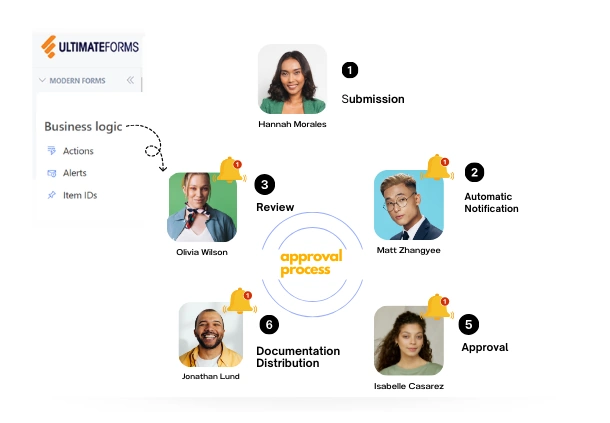
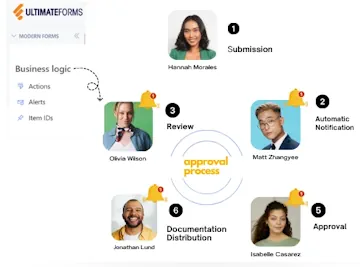
Clear Reporting
Present data as actionable insights with detailed shareable reports, dashboards, KPIs, calendars and charts.
Everyone is able to visualize information in an accessible fashion, improving responsiveness and accountability.
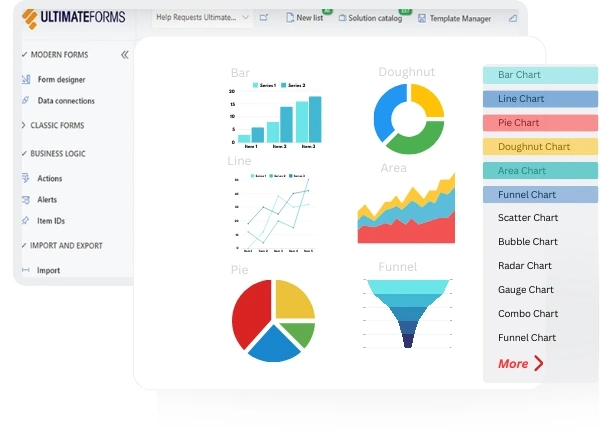
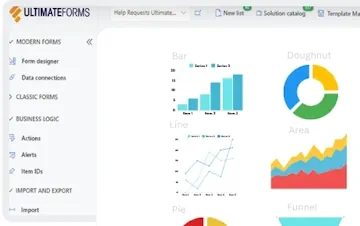
100’s of Templates



